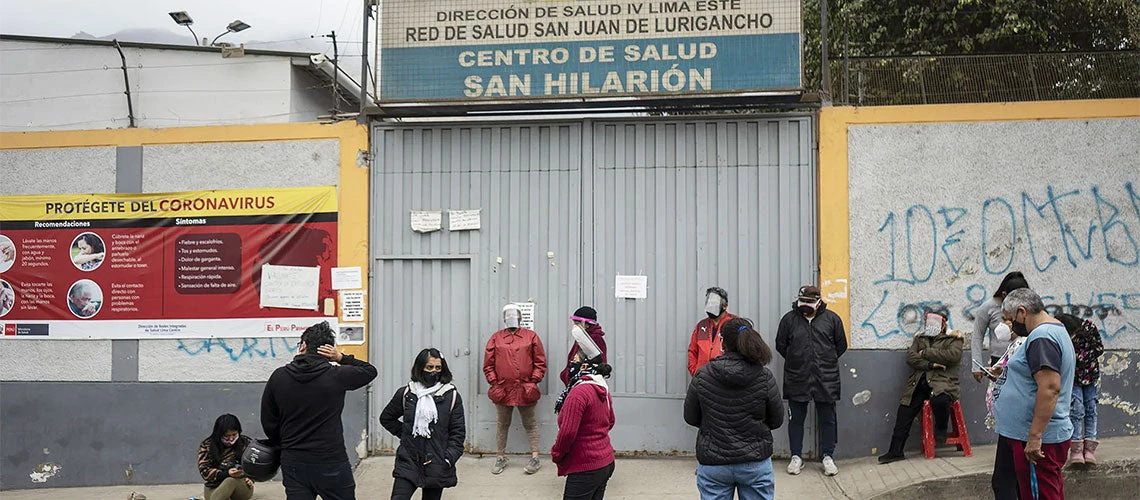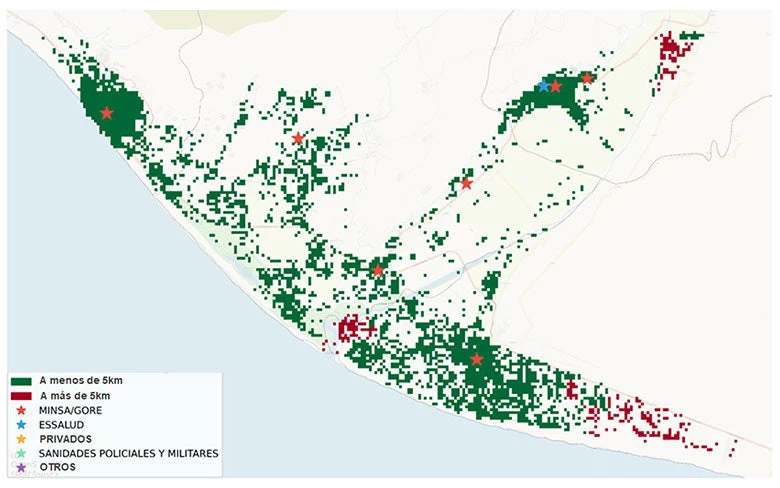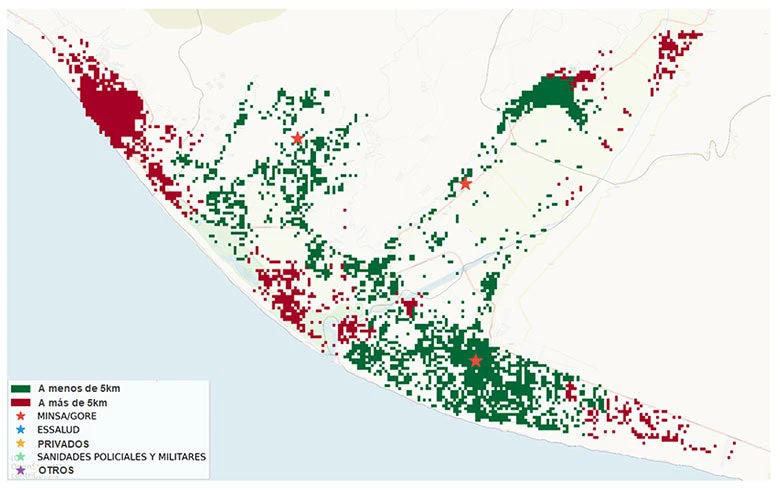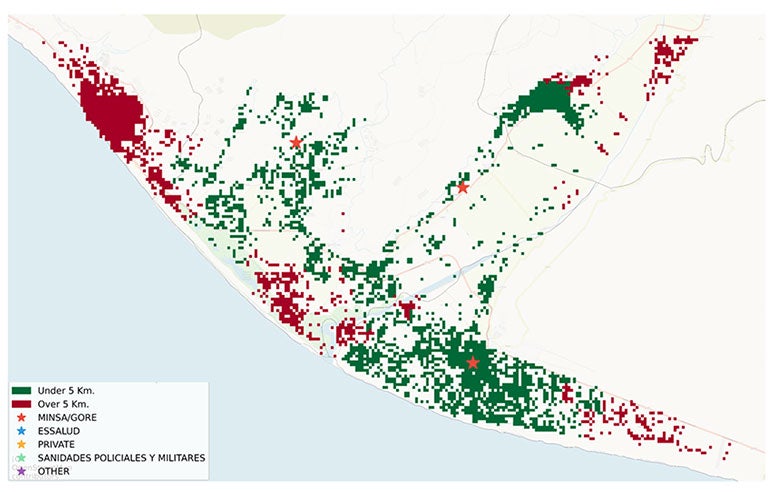 People waiting for care outside a health facility in San Juan de Lurigancho, Lima. Photo: Leslie Moreno Custodio; Salud con Lupa (2020). https://bit.ly/46OrcYY
People waiting for care outside a health facility in San Juan de Lurigancho, Lima. Photo: Leslie Moreno Custodio; Salud con Lupa (2020). https://bit.ly/46OrcYY
In Peru, tales of the shortcomings within the healthcare system abound. While certain well-publicized cases garner more attention, the ongoing repercussions affect the daily lives of countless individuals. Despite over 99 percent of Peruvians holding health insurance, thousands still lack access to fundamental healthcare services . Increases in insurance enrollment or the construction of additional facilities are insufficient; what's essential is for the existing healthcare networks to ensure the availability and quality of care when the population requires it.
Overview of Health Coverage in Peru
The 2022 National Household Survey (ENAHO) reveals that 7 out of 10 people who needed medical care did not receive it . Thirty-five percent of them cited long waiting times as the main reason, whereas factors like distance or lack of insurance were only cited by 13 percent and 3 percent, respectively.
Why can't Peruvians access healthcare?

According to this data type, the problem doesn't lie in affiliation or geographic network coverage. Currently, Peru has more than 25,000 health facilities nationwide: one for every 1,300 people . An illustrative case is that of the province of Islay, Arequipa, where more than 93 percent of the population has access to a health facility within 5 km, and 43 percent has access to more than one facility within the same distance.
Population with access to a healthcare facility within 5km: Islay, Arequipa

Nonetheless, the situation takes a turn for the worse after 8:00 PM and during the weekends. The lack of coordination in medical coverage led to the simultaneous closure of healthcare facilities, leaving over 77,000 inhabitants without access to care during these periods, as depicted in the following map.
Population with access to a 24-hour healthcare facility within 5km: Islay, Arequipa

The lack of coordination within healthcare networks extends beyond temporal continuity of care. For example, 52 percent of primary healthcare centers under the Ministry of Health and regional governments lack medical professionals, while a significant 98 percent lack the essential infrastructure and equipment necessary for proper patient care.
How to expand the insurance network?
Currently, coordination among facilities under the same insurer is notably lacking and virtually inexistent between different insurers. Consequently, allocating the country's healthcare resources, including suitable infrastructure, specialized personnel, and medical equipment, lacks strategic planning and is scattered across smaller facilities with limited capacity. Consolidating critical resources within strategic centers could enhance the quality and efficiency of care without compromising geographic coverage.
As an illustration, in the case of Islay, by reducing the number of healthcare establishments by 63 percent (from 8 to 3), as depicted in the map below, there would be an opportunity to allocate increased resources towards staffing, equipment, and infrastructure enhancements. Remarkably, even with this reduction, 80 percent of the population would remain within a 5-kilometer radius of an accessible healthcare facility. The savings generated could be channeled to bolster overnight emergency operations, effectively bridging the gaps in coverage during those hours.
Population with access to a healthcare facility within 5km with only 3 strategic centers: Islay, Arequipa

Five recommendations for articulating the health network in Peru
The World Bank's experience in the sector allows us to suggest some actions to achieve effective coverage of health needs in Peru:
- Consolidating resources in strategic health centers: Implementing the coverage optimization demonstrated here, as exemplified in the case of Islay, would enhance healthcare capacity, quality, and availability of services.
- Adjust care services to the health needs of the population: In the context of an increasing burden of chronic diseases, primary care, traditionally focused on infectious, maternal, and nutritional diseases, needs to adapt to meet evolving health needs.
- Allocate results-based budget at the territorial network level: Healthcare facilities should receive funding based on a collaborative strategy and outcomes achieved for their designated population. It is imperative to address the current limitations in capitated payment mechanisms, which are currently restricted to medication purchases.
- Enhance inter-network collaboration between various healthcare providers and insurers: Coordination should be optimized by establishing tariff agreements to enable seamless service procurement and reimbursement across insurance networks.
- Information for healthcare and planning across subsectors: The multiple subsectors and operational units collect and manage data without establishing interoperability. Implementing a Health Information Management System would allow for the monitoring of patient care and facilitate coordinated resource allocation and planning throughout the entire sector.
Stay updated with our weekly article
Related articles


Join the Conversation